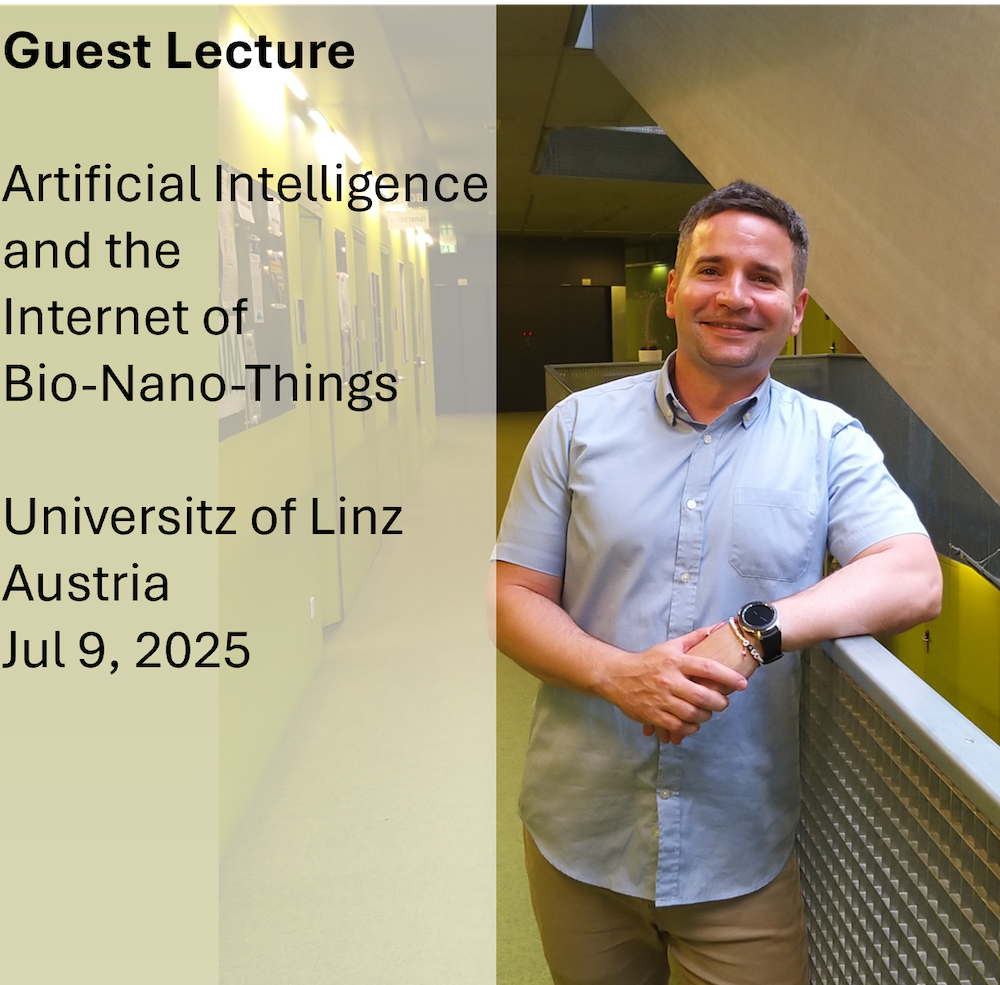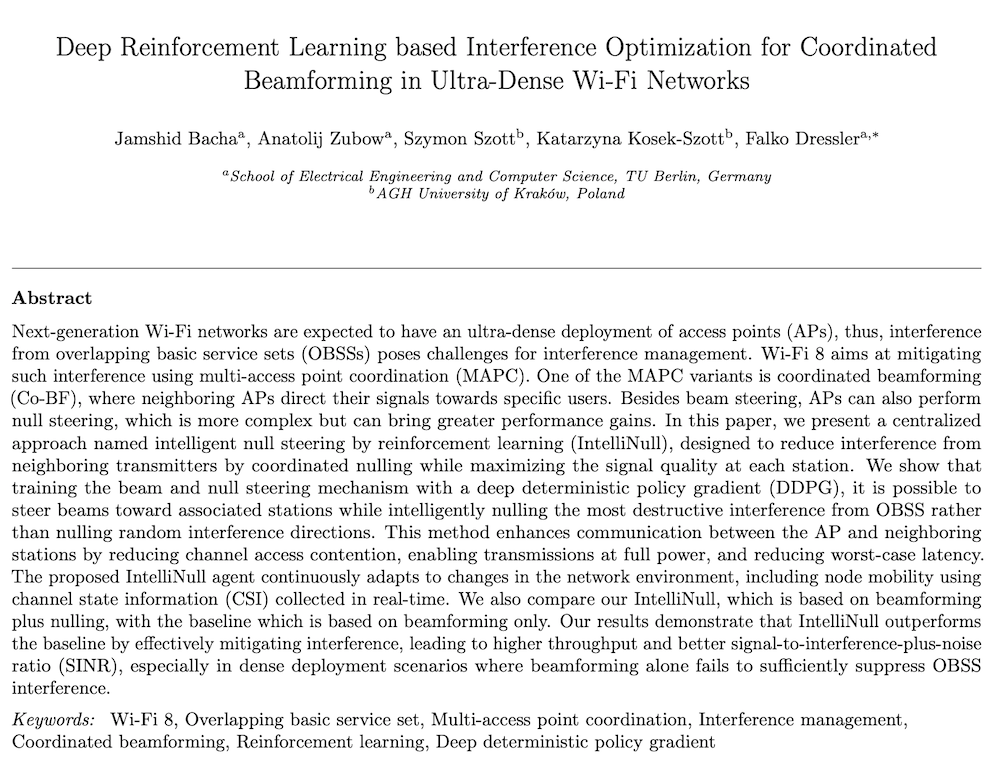Literature Database Entry
blobel2017sender
Johannes Blobel and Falko Dressler, "Sender-Triggered Selective Wake-Up Receiver for Low-Power Sensor Networks," Proceedings of 36th IEEE Conference on Computer Communications (INFOCOM 2017), Demo Session, Atlanta, GA, May 2017.
Abstract
Wake-up receivers can be used in wireless sensor networks to solve the problem of node synchronization in an energy efficient manner. Conceptually, the idea is to use a dedicated wake-up signal before the actual transmission over a main radio transceiver. Several ideas have been discussed in the literature on how to make such an architecture as energy efficient as possible. State of the art are multi-stage wake-up receivers that first detect a code, i.e., an ID, before powering up the main receiver and the microcontroller. We recently introduced an extension to this scheme that adds a flexible addressing functionality. With this so called Selective Wake-Up Receiver (SWuRx), the sender can decide whether it wants to wake up all nodes in communication range (broadcast), a subset of nodes (multicast), or just a single node (unicast). In this demo, we present for the first time a prototype of our developed SWuRx. The wake-up signal contains an address and a mask and is send with a Software Defined Radio (SDR). The LEDs on our prototype show the nodes address as well as the received data. If a node is woken up by the wake-up signal, this is shown to the user by turning on a light. This way the user can directly observe the effect of different wake-up signals.
Quick access
Original Version ![]() (at publishers web site)
(at publishers web site)
Authors' Version ![]() (PDF on this web site)
(PDF on this web site)
BibTeX ![]()
Contact
BibTeX reference
@inproceedings{blobel2017sender,
author = {Blobel, Johannes and Dressler, Falko},
doi = {10.1109/INFCOMW.2017.8116522},
title = {{Sender-Triggered Selective Wake-Up Receiver for Low-Power Sensor Networks}},
publisher = {IEEE},
address = {Atlanta, GA},
booktitle = {36th IEEE Conference on Computer Communications (INFOCOM 2017), Demo Session},
month = {5},
year = {2017},
}
Copyright notice
Links to final or draft versions of papers are presented here to ensure timely dissemination of scholarly and technical work. Copyright and all rights therein are retained by authors or by other copyright holders. All persons copying this information are expected to adhere to the terms and constraints invoked by each author's copyright. In most cases, these works may not be reposted or distributed for commercial purposes without the explicit permission of the copyright holder.
The following applies to all papers listed above that have IEEE copyrights: Personal use of this material is permitted. However, permission to reprint/republish this material for advertising or promotional purposes or for creating new collective works for resale or redistribution to servers or lists, or to reuse any copyrighted component of this work in other works must be obtained from the IEEE.
The following applies to all papers listed above that are in submission to IEEE conference/workshop proceedings or journals: This work has been submitted to the IEEE for possible publication. Copyright may be transferred without notice, after which this version may no longer be accessible.
The following applies to all papers listed above that have ACM copyrights: ACM COPYRIGHT NOTICE. Permission to make digital or hard copies of part or all of this work for personal or classroom use is granted without fee provided that copies are not made or distributed for profit or commercial advantage and that copies bear this notice and the full citation on the first page. Copyrights for components of this work owned by others than ACM must be honored. Abstracting with credit is permitted. To copy otherwise, to republish, to post on servers, or to redistribute to lists, requires prior specific permission and/or a fee. Request permissions from Publications Dept., ACM, Inc., fax +1 (212) 869-0481, or permissions@acm.org.
The following applies to all SpringerLink papers listed above that have Springer Science+Business Media copyrights: The original publication is available at www.springerlink.com.
This page was automatically generated using BibDB and bib2web.





